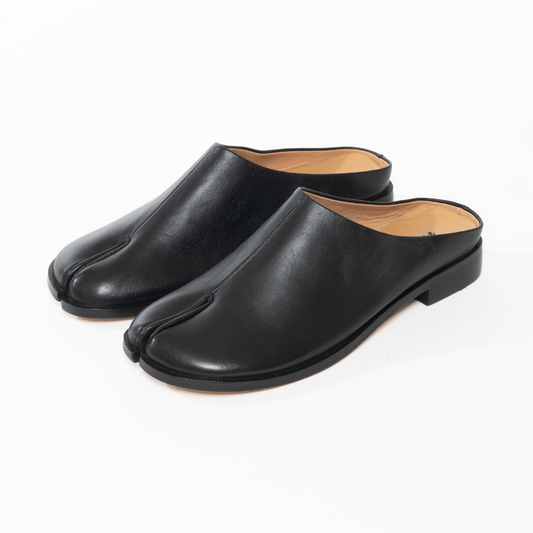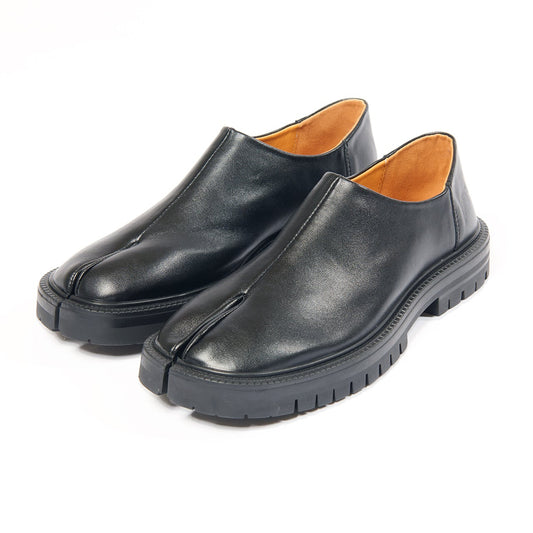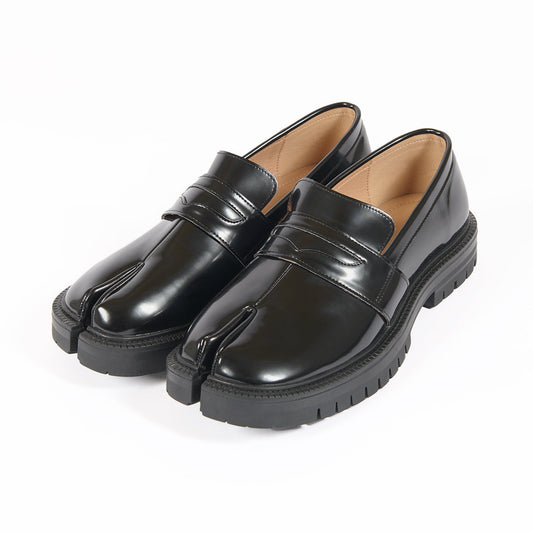History of Japanese Fashion: Between Tradition and Innovation
Japanese fashion fascinates, intrigues, and inspires. Sometimes minimalist, sometimes exuberant, it reflects a country where the old and the new coexist in perfect harmony. This article takes you through the history of Japanese fashion—from its ancient foundations to its current global influence. Special attention is given to an iconic accessory: the tabi, traditional split-toe socks that have stood the test of time through constant adaptation.
Over the centuries, the Japanese have developed a unique relationship with clothing. Beyond protection or aesthetics, garments express a worldview tied to nature, seasons, silence, discipline, and spirituality. To understand Japanese fashion is to understand a way of being in the world.
Foundations of Japanese Fashion
Influence from Chinese Dynasties and the Imperial Court
Between the 6th and 9th centuries, Japan maintained close ties with China, particularly under the Tang dynasty. Japanese envoys returned with formal clothing codes that shaped elite fashion, including wide-sleeved robes and silk fabrics. However, Japan quickly adapted these influences, developing its own unique style tailored to local culture and climate.
The Rise of the Kimono
Derived from the kosode, the kimono appeared in the Heian period. Simple in structure, it allowed freedom of movement while symbolizing elegance and posture. Over time, it evolved into a silent language of social codes: colors, motifs, and ways of tying the obi communicated season, rank, and personal taste. This reflected the aesthetic of mono no aware—the awareness of fleeting beauty.
Spiritual and Symbolic Significance
In traditional Japanese thought, clothing is not an empty shell—it holds spiritual and ritual significance. In Shintoism, Japan’s native religion, physical and spiritual cleanliness is essential. Clothing contributes to this purity: it must be clean, well-fitted, and worn according to specific rules.
During religious rituals, Shinto priests wear immaculate garments, often white, symbolizing purification. This principle extends to daily life: removing shoes before entering a home, wearing white tabi during ceremonies, and so on.
💡 Good to know: The word “kimono” once simply meant “thing to wear.” It wasn’t until the 19th century that it became a specific term for Japan’s iconic traditional garment.
Edo Period: The Golden Age of Traditional Clothing
Clothing as a Social Code
During the Edo period (1603–1868), strict class-based dress codes shaped fashion. Merchants, though wealthy, were forbidden from wearing luxurious items, prompting subtle elegance in linings, patterns, and textures—a style known as “invisible luxury.”
Textile Mastery and Regional Craftsmanship
Dyeing and weaving techniques flourished: shibori, yuzen, kasuri, and katazome. Artisans worked with silk, linen, cotton, and even banana fiber. Garments were durable, personal artworks passed through generations.
Kimono as Cultural Expression
In cultural hubs like Yoshiwara, courtesans and kabuki actors influenced fashion. Their ornate kimonos told stories through symbolic motifs. Though universal, the kimono varied in sleeve length, cut, and style by age, gender, and context.
Tabi: A Meaningful Detail
Origins of Tabi and Their Connection to Japanese Sandals
Tabi first appeared in Japan during the Muromachi period (15th century), alongside the rise of warrior classes and increasingly codified rituals. Originally made from leather or hemp, they were soon crafted from cotton—a material then considered noble.
Their key feature is the separation of the big toe, designed for a practical purpose: the Japanese traditionally wore rope sandals (waraji), wooden clogs (geta), or straw sandals (zori), all secured to the foot with a thong passing between the toes. Tabi thus became a kind of "foot underwear," perfectly adapted to this type of footwear.
Beyond their function, tabi quickly acquired strong symbolic value. They came to represent discipline, elegance, and purity. In Noh theater, wearing tabi is a ritual act. In tea ceremonies, they are mandatory. Among samurai, the white color of the tabi symbolized restraint and inner discipline.
Colors also vary depending on usage: white for formal or religious events, black or blue for everyday tasks, and sometimes bright colors for theater and performances. Their production follows precise artisanal techniques, often passed down through generations of traditional shoemakers.
🛍️ Want to try tabi shoes?
Our exclusive collection of traditional and modern tabi lets you experience unique comfort while embracing an iconic piece of Japanese culture.
👉 Explore our styles in soft leather
👉 Perfect for a zen, minimalist, or avant-garde look
👉 Fast shipping from France and easy returns
Contemporary Revival: Urban Fashion, Sportswear, and Luxury
Since the early 2000s, amid a renewed interest in traditional craftsmanship, tabi have experienced a resurgence. It began quietly in Japan—especially in artistic and alternative circles—before streetwear brands and even luxury houses embraced the concept.
Maison Margiela reintroduced the tabi as a leather ankle boot, now considered iconic. At the same time, Japanese brands like Sou•Sou, Marugo Jika-Tabi, and Tabio reinvented the tabi in modern forms: cushioned soles, technical fabrics, graphic patterns, and sneaker- or yoga-inspired designs.
This revival has a double appeal: tabi evoke deep Japanese tradition while offering a more natural and body-aware experience. The split-toe design improves balance, enhances movement awareness, and offers a sense of freedom unmatched by conventional socks.
They have won over minimalists, designers, dancers, athletes—and more broadly, anyone seeking meaningful garments adapted to modern life.
💡 Good to know: Numerous biomechanical studies show that separating the big toe promotes better posture, a more stable gait, and reduced muscular tension in the legs and back.
The Westernization of Japanese Fashion (Meiji Era to 1950s)
The Arrival of Western Clothing and the Partial Disappearance of the Kimono
The Meiji era (1868–1912) marked a dramatic turning point. After over two centuries of isolation, Japan rapidly modernized. The government imposed Western standards—especially in education, politics, and clothing.
High-ranking officials, soldiers, and teachers were required to abandon the kimono in favor of Western three-piece suits, ties, and bowler hats. The modern Japanese man in the street became indistinguishable from a 19th-century European.
For the general population, the shift was gradual. In rural areas and among women, the kimono remained dominant for decades. But slowly, especially in Tokyo and Osaka, tailoring shops opened, Western fashion magazines circulated, and traditional dress gave way to modern textiles.
Cultural Resistance: Women, Festivals, and Daily Life
Still, Westernization did not erase Japanese traditional fashion. Women continued to wear kimonos for major life events, children wore them for school ceremonies, and local festivals celebrated ancestral garments.
Tabi survived too—worn at home, during ceremonies, or in manual trades. Japanese construction and garden workers kept using jika-tabi (tabi with rigid soles) for their flexibility and durability.
This period marked the beginning of a dual wardrobe: a modern, Westernized Japan on one side, and a deeply rooted, traditional Japan on the other.
The Kimono Relegated to Tradition... Temporarily
After World War II, the kimono became almost exclusively ceremonial—worn at weddings, funerals, graduations. Women often needed formal training to learn how to wear it correctly.
However, in the 1960s and 1970s, a few Japanese designers began to reclaim the kimono, not just as traditional clothing, but as an object of design and cultural study. This shift paved the way for a more radical reinvention in the decades to come.
The Contemporary Japanese Style Revolution
Yohji Yamamoto, Rei Kawakubo, and the Aesthetics of Deconstruction
In the 1980s, Japanese designers like Yohji Yamamoto, Rei Kawakubo, and Issey Miyake disrupted the global fashion scene. Their names became synonymous with a new approach: conceptual, poetic, radically innovative.
Their collections featured asymmetrical cuts, recycled materials, abstract silhouettes, and dark palettes. They rejected symmetry, gender norms, and seasonal trends. Drawing from Japan’s textile heritage, they critiqued Western consumerism and conformity.
The kimono, T-cut construction, and draping logic were reimagined. Clothing was no longer about seduction—but about questioning: the body, movement, and identity.
Harajuku and Japanese Streetwear: Identity and Freedom
Meanwhile, in the 1990s, Tokyo’s youth developed a globally unique style: Harajuku fashion. In this neighborhood, young people combined Western influences with traditional garments, cosplay, punk, kawaii, and more—in explosive mixes of color, texture, and reference.
This streetwear movement expressed personal identity in a society known for uniformity and discretion. The outfits were exuberant, theatrical, and deeply creative.
Tabi found a place in this world too—worn with vintage dresses, hybrid sneakers, or cosplay looks, becoming highly symbolic and visually striking accessories.
Back to Roots: Craftsmanship, Modernized Tabi, and Hybridization
Since the 2010s, a new movement has emerged: a return to roots. Young Japanese designers, sometimes trained abroad, have revived traditional know-how—natural fabrics, ancestral dyeing techniques, and local craftsmanship.
Tabi are part of this wave. They’ve been reinterpreted in modern forms: vegan models, denim tabi, collaborations between artisans and sneaker brands, or limited edition numbered pieces.
This fashion promotes slower, more conscious consumption aligned with ecological and spiritual values. It embodies the Japanese concept of wabi-sabi—the beauty of imperfection, simplicity, and transience.
💡 Good to know: Some active tabi workshops in Japan still use hand-stitching techniques dating back to the Edo period. Buying their products helps support a living heritage.












